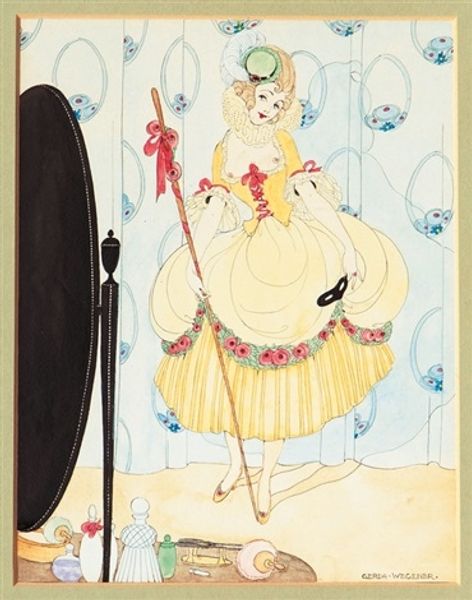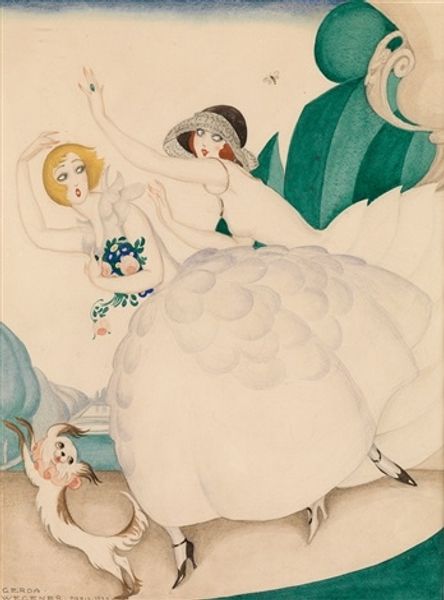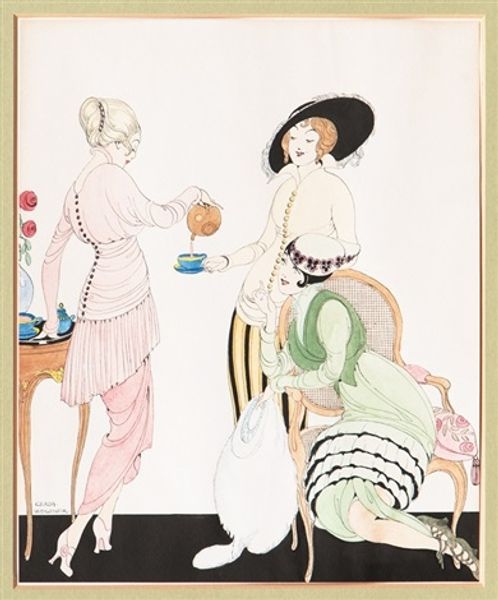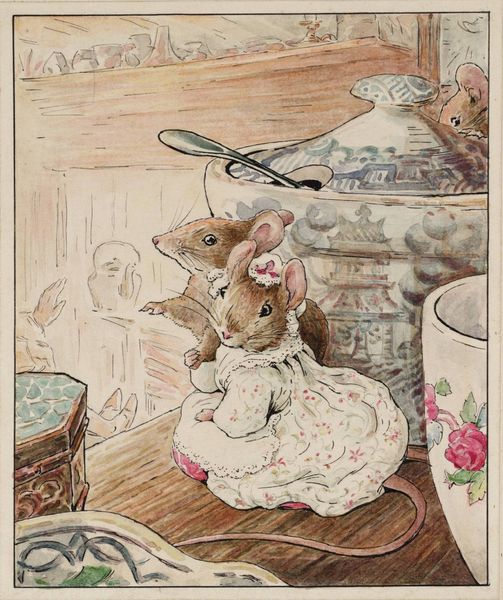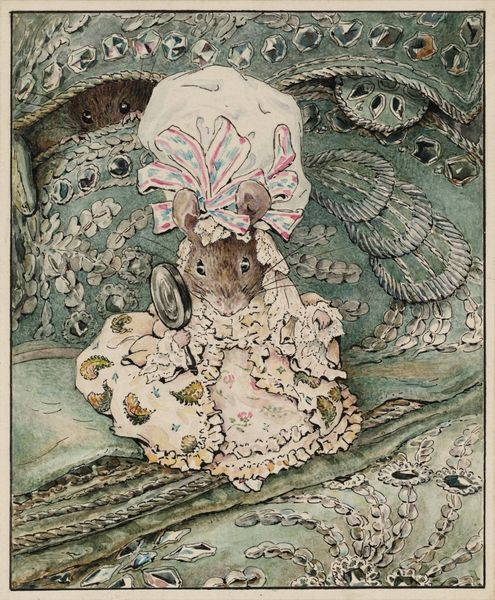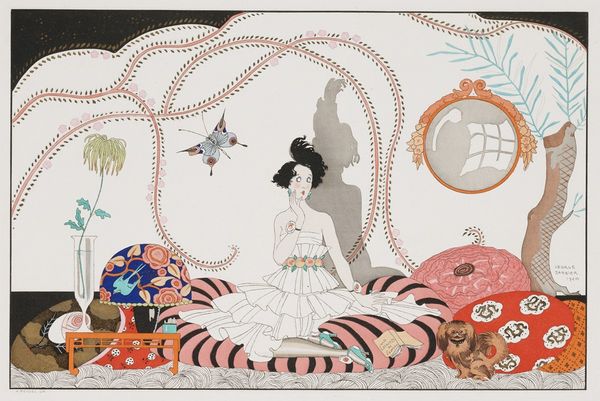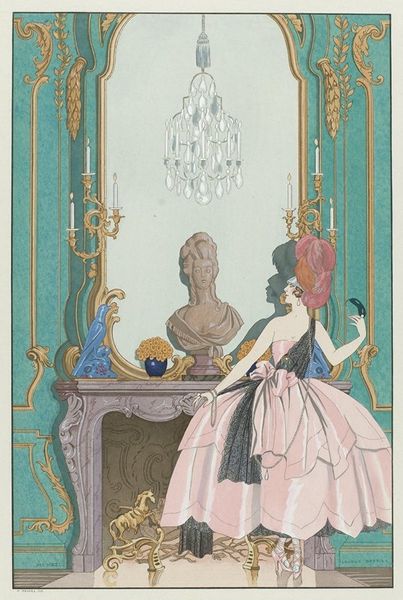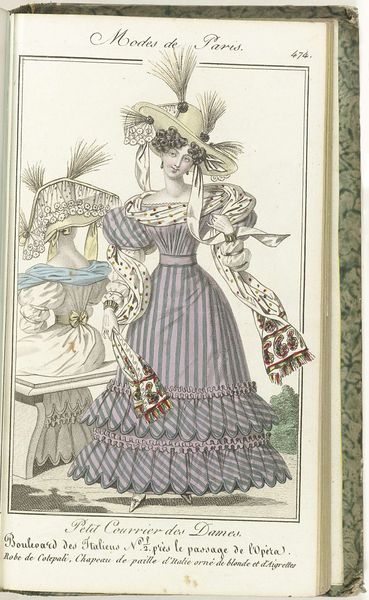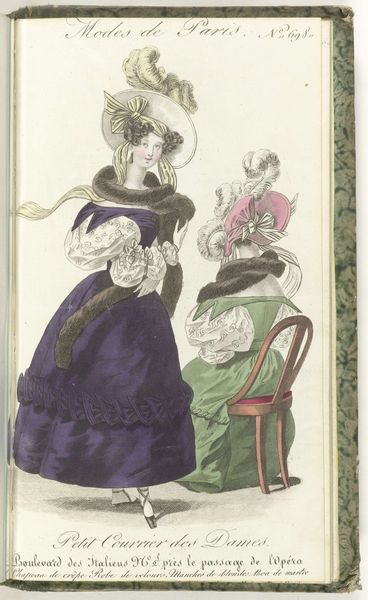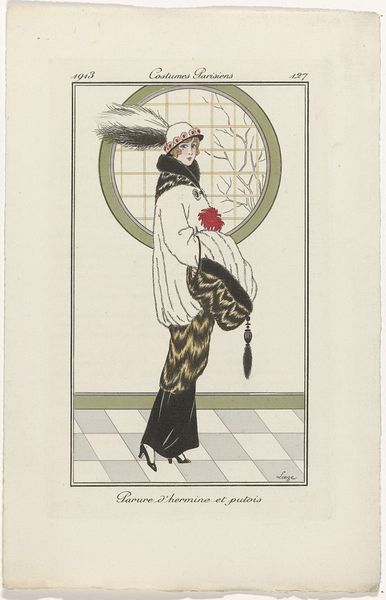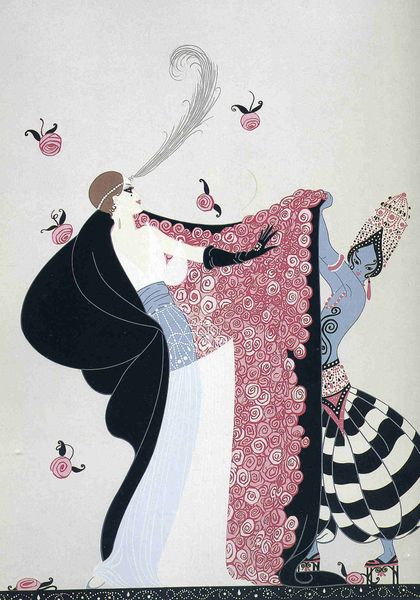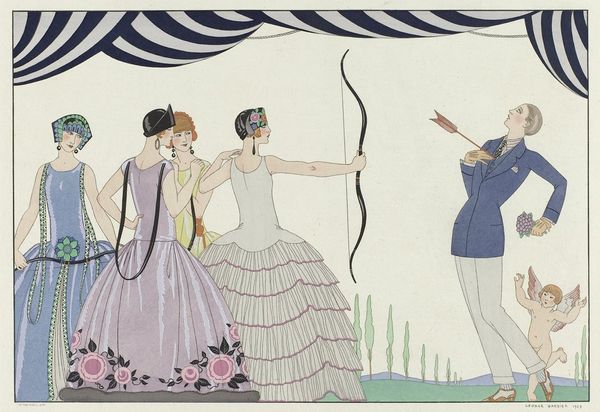
drawing, watercolor
#
drawing
#
art-nouveau
#
water colours
#
figuration
#
watercolor
#
feminist-art
#
watercolour illustration
#
watercolor
Copyright: Public domain
Editor: Here we have Gerda Wegener’s 1916 watercolor drawing, "A Little Rascal." I'm struck by the pastel palette and the overall feeling of lighthearted chaos. What do you make of Wegener’s depiction of domestic life in this piece? Curator: From a materialist perspective, I find it compelling to consider how Wegener utilizes watercolor, a medium often associated with delicacy and femininity, to portray a scene that hints at social tensions and burgeoning consumer culture. Notice how the rendering of luxury items like the tea set contrasts with the somewhat flattened, almost illustrative style. It isn't about illusion, but a commentary. How does the empty picture frame overhead resonate with you, considering that? Editor: That's interesting. I hadn’t really noticed the empty frame. So you are suggesting that Wegener is focusing more on the constructed nature of this interior space rather than trying to depict reality? Curator: Precisely. And look at the precise draftsmanship describing how these commodities would feel as objects-- the weight and function of them. In rendering that dog as the instigator, and by dressing the lady in fanciful caricature of formal attire, we get insight into a society undergoing change with access to mass-produced goods and emerging freedom for the socialite class of women. Does that alter your sense of what she might be saying? Editor: Definitely. It makes me think about the labor involved in creating these scenes of leisure, and how Wegener's work sort of exposes that. The messiness is less incidental now. Curator: Exactly. Perhaps thinking through the art-nouveau aesthetic brings her interests in material culture to bear in new ways for you. Considering the feminist art influence helps focus on how Wegener is portraying women, both in art, in the culture, and the economic place of women. It underscores those class differences inherent in “A Little Rascal," don't you think? Editor: I see that clearly. Thank you, I never thought I would analyze an image of a dog! I'll certainly look at Wegener's work differently from now on. Curator: Likewise. It is enriching to realize what the artist considers the most import to the work, and by following those decisions to see what meaning may lie in what the culture uses as the 'materials' of art.
Comments
No comments
Be the first to comment and join the conversation on the ultimate creative platform.
